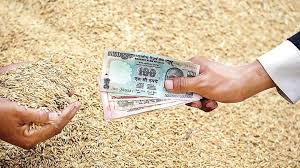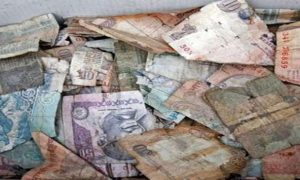MSP has been pivotal in ensuring the passage of better prices to farmers and has led to optimal price discovery, SBI says in its report
Farmers’ income doubled in the financial year 2021-22 as compared to 2017-18 for certain crops in some states, like soyabean in Maharashtra and cotton in Karnataka. In all other cases, the income rose in the range of 1.3-1.7 times, according to a report by SBI. It added that the increase in farmers’ income engaged in cash crops has been more prominent compared to such farmers growing non-cash crops.
“Allied / non-farm income showed significant increase of 1.4 -1.8 times in majority of states in tandem with farm income during the same period. This substantiates the trend as per the 77th National Sample Survey that source of farmer income has become increasingly diverse apart from crops,” SBI Research said in a report released on Sunday, titled ‘Special Report on Agriculture’.
It added that the minimum support price (MSP), increasingly aligned with market-linked pricing and increasing by 1.5-2.3 times since 2014, has been pivotal in ensuring the passage of better prices to farmers and has led to optimal price discovery, setting ‘floor price benchmark’ for multiple crop varieties (23 till now), also encouraging farmers to gradually move over to crop varieties that have better yield/value.
“The KCC (Kisan Credit Card) scheme, continuously improved and revamped by GoI has been instrumental in bringing a large number of farmers under the ambit of formal credit mechanism at subsidised rate of interest from institutional players (presently 7.37 crore active KCCs),” it added.
The report said current regulatory norms allow KCC renewal every year with full repayment of principal and interest unlike other CC/OD loans where interest servicing is sufficient for renewal. The renewal for KCC loans with repayment of both principal and interest only makes the farmer eligible for interest subvention and an enhancement of 10 per cent in the limit every year. Given that each review could take up to 45 minutes, juxtaposing it for 7.37 crore KCC implies banks may have to spend a cumulative about 23 lakh man days to complete this process every year that otherwise could have been used for fresh lending to agriculture.
Read More: How Many SIM Cards Are Issued On Your Aadhaar Card? Follow These Steps To Find Out
The Aspirational Districts programme, which was launched in January 2018, aims to quickly and effectively transform 124 most under-developed districts across the country. “We believe that this programme has been a huge success in just a period of 4 years at least in respect of SHG financing. Of the total SHG financing in the country, 18 per cent outstanding belongs to these 124 aspirational districts with share in excess of 30 per cent in select districts,” SBI said.
SBI said its study is based on primary data of SBI agri portfolio across states containing granular data of various crops from agri-intensive branches analyses the change in income of farmers over the last five years.
“In principle, we have used a well-spread, well-represented, and probabilistic sample to estimate the change in income from FY18 to FY22 for all segments of farmers, large to small to marginal ones. Our statistical inferences using “t-test” and “Ftest” as also “Lorenz Curve” probing increase in average income and diminution in inequality provide validity to our key findings,” it added.





































